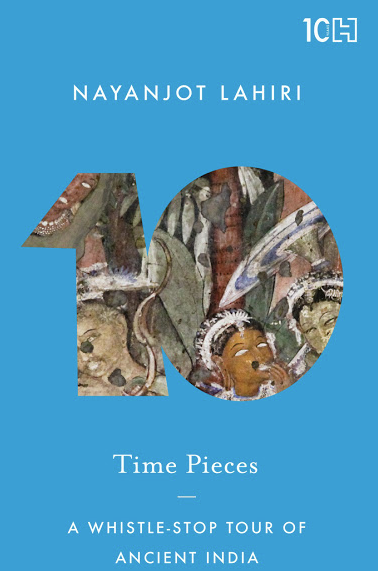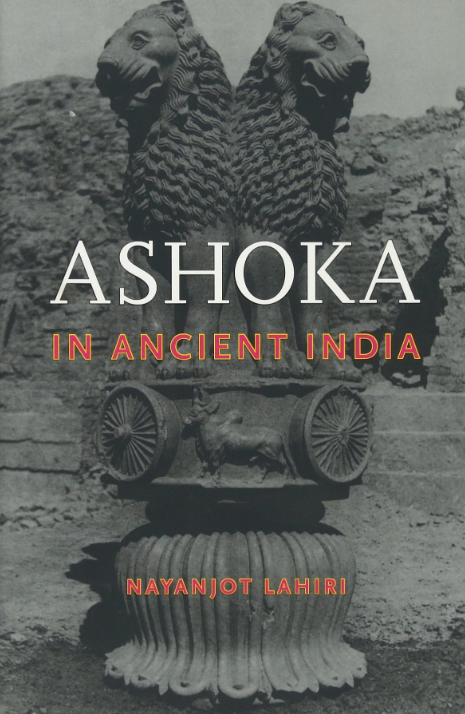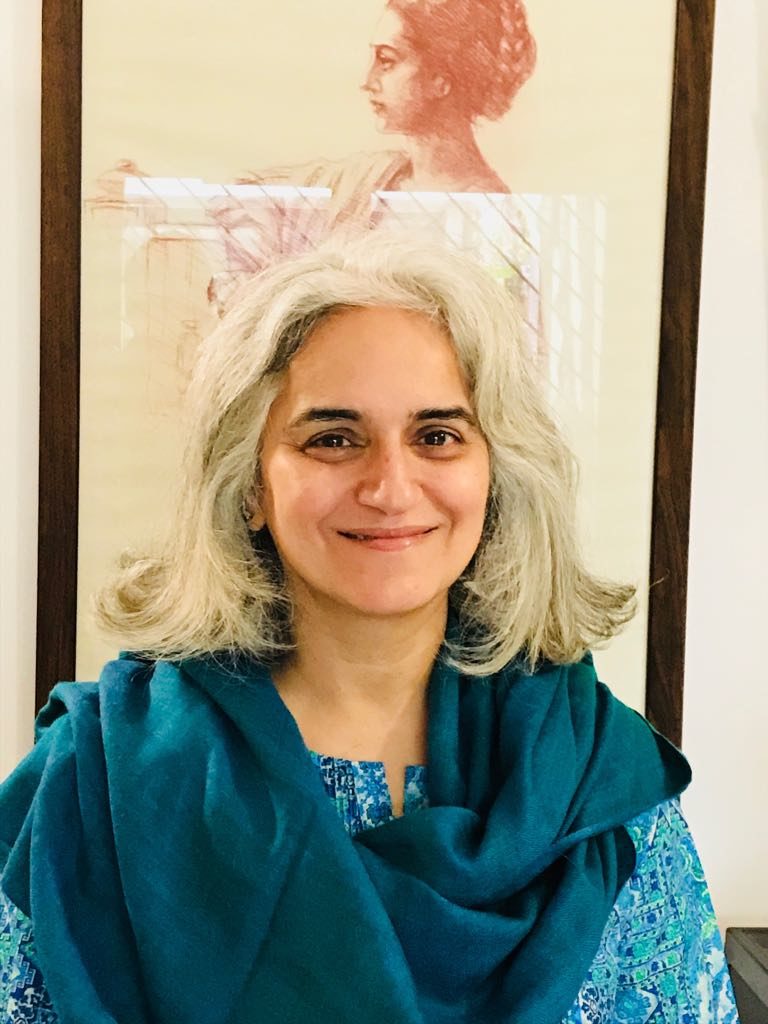“How did I come to study history?” asks historian and archaeologist Nayanjot Lahiri. “My only reason for doing so was curiosity and interest. As far as I remember, my decision to do an undergraduate degree in history had nothing to do with my marks which in my school leaving exam (68) were much lower than what I scored in Economics, Geography or English Literature. It had, however, everything to do with what interested me, an interest which came out of reading books of all kinds such as The Story of Mankind by the Dutch-American historian Hendrik Wilelm Van Loon, a book on world history written by Derek Wood and Mulk Raj Anand’s Maya of Mohenjo Daro. If these are the books that I remember looking back, the first history teachers who I think made a difference to my life were those who taught me in St. Stephen’s College in Delhi University in my undergraduate years, especially Basudev Chatterjee, whose expositions on Gandhi, on the Permanent Settlement, on the fundamentals of history and on the books that students interested in history should read, were a huge source of inspiration…”
Nayanjot Lahiri finished school at the age of 16. She began her teaching career in Hindu College in Delhi University and her research career in the Department of History in 1981 when she 21. “A privilege, a very great one in hindsight, fell to my lot: Dilip Chakrabarti, who taught archaeology, began to guide me. DKC, as he is usually called, was a tough supervisor who was not interested in winning popularity, but guided research to train his students. So, there was much scolding and shouting, but, I think the end result was that DKC did inculcate in his students the desire to produce work which could be published in journals of some pedigree…”
“It was out of my research on pre-Ahom Assam that my interest in trade-routes was sparked off. After finishing my MPhil dissertation, my supervisor suggested that we do a joint paper on the Assam-Burma route to China. By the time it was published, I was pretty sure that routes are what I wanted to engage with. So, from the mid-1980s, for practically five years, I lived and breathed trade routes, looking at how lines of communication in the Indian subcontinent could be explored. The Harappan Civilisation was particularly challenging because written records, which could have indicated the commodities that were traded, remain undeciphered. So, it was primarily through the archaeological record – the raw materials that were used for manufacturing a variety of objects, from humble tools to exquisite jewellery, and the probable source areas of those raw materials – that the connections over diverse areas were determined… Yet, the argument that was made has since been supported by characterisation studies, in the work of Randall Law, for instance, which has underlined what I wrote which is that the Indus Civilisation was not in any way solely or even significantly dependent on raw materials from Mesopotamia, Iran and the Persian Gulf…”
“By the time I finished my PhD, other kinds of questions had begun to absorb me. These too were about artefacts and sites… Early Indian cultures, for instance, were marked by a strong preference for pure copper artefacts. Eventually, while researching a book on copper and its alloys in ancient India (which I coauthored with Dilip Chakrabarti), a more meaningful explanation emerged, in large part out of a reading of ethnographic literature, especially Meera Mukherjee’s superb Metalcraftsmen of India.”
“Ballabgarh in Haryana is an area that I got to know intimately because, my friend and colleague Upinder Singh (and we were joined for the last stretch by a former student Tarika Uberoi) spent a great deal of time on fieldwork there, looking at mounds, monuments, scatters of pottery and sculptural elements. These can still be seen in and around its numerous villages and urban localities…”

“The genesis of my book Finding Forgotten Cities goes back to 1996 when I decided to spend a few weeks in the India Office Library in London, looking for 19th century records relating to Ballabgarh. Those I did not find but I did come across some unknown documents connected with the archaeologist John Marshall. In 1999, Charles Lewis, himself an author, guided me to the head office of the Archaeological Survey of India at Delhi where in the spirit of a true fellow researcher, he drew my attention to a treasure trove of material I was not aware of. That is where I learnt about the little-known saga of how the Indus Civilisation was discovered and about the officers linked with that discovery. Of them, Luigi Pio Tessitori made the deepest impression on me. About him, I learnt a great deal because another individual, a Kanpur businessman called Hazarimal Banthia, made it his business to get in touch with me when he learnt at Bikaner that I was interested in his work. He had brought back photocopies of a lot of correspondence of Tessitori to the Rajasthan state archives and in that correspondence, I found much about this little known figure. So, my research has been shaped by the unexpected intervention of enormously ungrudging individuals…”
Nayanjot Lahiri is a historian and archaeologist of ancient India and currently a professor of history at Ashoka University. She was earlier a professor at the Department of History at the University of Delhi. She is the winner of the 2013 Infosys Prize, in the humanities, for her work in archaeology and the 2016 awardee of the John F. Richards prize for her book Ashoka in Ancient India. Her books include The Archaeology of Indian Trade Routes (1992) and Finding Forgotten Cities (2005). She has edited The Decline and Fall of the Indus Civilization (2000) and an issue of World Archaeology entitled The Archaeology of Hinduism (2004).
This interview is based on her latest book, Time Pieces: A Whistle-stop Tour of Ancient India, published by Hachette India.
The history of India can be divided into the ’ancient’, the ‘medieval’ and the ‘modern’. There are also sub-categories: early medieval, early modern. Ancient India is further subdivided into the prehistoric, proto-historic and historic. Can you please explain these academic divisions for readers who are not trained historians.
The division of history into the ‘ancient’, the ‘medieval’ and the ‘modern’ is common across the world. In India, the ‘ancient’ is usually from the beginning of the presence of hominins in the form of stone tools that go back to some 1.5 million years ago and generally speaking this makes a transition into the ‘early medieval’ around the seventh century CE, roughly ending around 1000 CE. The ‘early medieval’ is marked by a number of regional states across the Indian subcontinent. The ‘medieval’ begins with the end of the early medieval while the modern is deemed to start from the 18th century. However, nowadays, the centuries dominated by the Mughal dynasty (from the 16th century onwards) are often described as ‘early modern’ because of the integration of India into global trends – all of which is seen as creating interconnected histories.
Think of our own times where those who go to war and are killed are seen as great, without considering the grief and sense of loss that this brings to their near and dear ones.
Why did you choose to go on a ‘whistle-stop’ tour of ancient India, when most historians would prefer the familiar confines of the archives, ancient textbooks, official gazetteers, faded manuscripts and a study table to document their work?
This small book is about a vast span of history and so ‘whistle-stop’ suits its contents. It happened by chance rather than intention. It is the outcome of stuff that I had tucked away in my head which I was cajoled to recall when a publisher friend asked me to do a book for him. Over the decades, as I have researched and written about various subjects from the inscriptions of ancient Assam to the archaeology of Faridabad, from the Harappan Civilisation to Emperor Ashoka, there have always been quirky characters, curious connections, a sculpture that I saw under a tree or in a museum that I just stored in the back of my mind. A lot of these I have encountered in my wanderings across beautiful landscapes in India and sometimes beyond and those have inspired me in various ways that are captured in books like Ashoka in Ancient India. But, putting all that here together didn’t happen until Hachette India approached me to write a book on ancient India which would weave them together into a story that is well researched but told with a lightness of touch and which is individualistic and opinionated. Individuals outside academia have pushed me in certain directions in all kinds of ways. My book – Time Pieces – certainly originated in such circumstances.
Indeed, the language of the book is full of rigour and nuance, but it also not heavily academic, almost like a dialogue, a folk story, like the oral tradition, as if you are in a conversation and not writing a text. Was this spontaneous?
To be honest, no. It requires a lot of hard work, specially for me because I am an academic! However, it is possible to craft such prose especially when you have wonderful editors like Rukun Advani of Permanent Black and Poulomi Chatterjee of Hachette India.

Why do you think that if the Hindu Right in India chooses to coin an epigraph with the word ‘shit’ in it, they might actually say, ‘Gandhi was full of shit’. What is it that compelled you to study and write about the various ways the drainage systems or the compulsive lack of it worked in India, despite the obsession of physical cleanliness among the Hindu upper castes and elite. Besides, how is it that over the centuries manual scavenging and the daily degradation of cleaning the shit of the rich and powerful was foisted upon the ‘unwashed’ castes and classes by great Hindu kingdoms and civilisations?
I grew up with the knowledge that it was someone who held Rightwing views who murdered Gandhi. There are also enough statements that I have read over the years which makes it evident that the Hindu Right does not have a particularly high opinion of Gandhi. What we know of the history of hygiene in India is worth telling because, for one, we are constantly being reminded that India’s first civilisation had a strong sense of cleanliness as its drains and sewers suggest. This, however, is something that modern Indians completely lack. So, instead of having a misplaced pride, I thought we could draw a moral lesson from what archaeology reveals abut ancient hygiene. For another, we tend to forget about those who cleaned drains and would have been the early manual scavengers. This had to be the urban poor, who, in fact, are doubly unfortunate because modern scholars have not considered them to be worthy subjects of research in quite the same way as they have considered the more prosperous urban residents. Over time, this got entrenched into caste divisions and those who dealt with what was considered polluting – from shit to dead bodies – were treated as outcastes.
The simple stone edifices and folk worship around ancient objects is significant because people across caste and religious lines will worship there. So, they are symbols of inclusive worship and beliefs.
Tell us about meat-eating in ancient and medieval times in many parts of India. When did the cow become a holy animal?
Ancient Indians, as my book reveals, were compulsively carnivorous. I am sure the cow was a holy animal for some in the first millennium BCE but there were others who did not share this view.
The cruel tradition of burying with the dead, alive, their most favourite and loved objects, has been narrated in your book. Like animals and birds. The logic of Sati too seemed to be derived from this tradition, whereby women were compelled to, or willfully chose to, burn themselves in the funeral pyres of their husbands. What is it about the glorified Indian past that such brutality becomes a spiritual convention?
Sati was not a practice that existed across India. If that was so, how did we have queens ruling after their husbands died? So, in looking at different elements that exist in ancient India, one should not lose a sense of balance. Actually, it is not just the glorified Indian past where such brutality and horror became acceptable. Think of our own times where those who go to war and are killed are seen as great, without considering the grief and sense of loss that this brings to their near and dear ones. This isn’t specific to ancient India.

A ‘sculptor-lover’ writing poetry and drawing great art on the rocks of a cave, waiting for his lover. Deep intimacy, consumption of wine while celebrating intimacy, unconventional forms of love, the ‘Time Pieces’ writes about this sublime unity of man and woman. How come India became such a conservative society with such a rich past of non-conformist celebration of love?
I don’t know, but like you, I too am amazed at the change. At the same time, history is about change. What Indians were in ancient times is not how one should expect them to be today. That is true for all places and contexts. Think of pasta which we associate with Italy. It only became a food there in medieval times. So, ancient Italians ate food that was different from those who followed them.
Ashoka did try to unsuccessfully foist vegetarianism on his subjects. This did not work then and it is unlikely to succeed now.
What is the significance of simple stone edifices, or small monuments of stone, celts, or structures left in their solitary isolation like an ancient Buddhist stupa fragment, worshipped in many parts of India, when compared to rituals in opulent temples controlled by powerful priests with treasures and political patronage?
The simple stone edifices and folk worship around ancient objects is very significant because people across caste and religious lines will worship there. So, they are symbols of inclusive worship and beliefs. These also do not require the mediation of Brahmans. So, everyone can come and worship there.
How did civilisations of the past understand laughter? Was sarcasm and spoof a part of daily life, was joy and enjoyment integral to creativity, art and literature, hard labour?
Talking about laughter was my way of bringing the emotions and feelings of all kinds of people into the historical canvas. How does laughter figure in literature and why don’t faces having fun figure in quite the same way in ancient Indian sculpture? These were some of the questions I looked at. In literature, no one – whether divine or human – is spared and it is a lesson for India today where poking fun at anyone in the public domain, especially gods and goddesses, ruffles all kinds of feathers. The challenge, though, is to find evidence of working people laughing and enjoying themselves. Well, when we hear about the Buddha being disapproving of people laughing out loud, the feeling I get is that people did in fact laugh in a way that more spiritual souls like him did not approve of.
How does laughter figure in literature and why don’t faces having fun figure in quite the same way in ancient Indian sculpture?
Despite Ashoka’s persistence on vegetarianism, people defied him and continued to eat meat. You have described the feastly tales in the Mahabharata — in one of them, Yudhisthira, the embodiment of Hindu virtue and honesty, feeds ten thousand Brahmans with pork and venison… How do you relate to the contradictions under the current ruling regime in India in terms of personal and collective food habits — for instance, beef is consumed in Kerala by all communities, including Hindus, and mutton dishes are enjoyed right inside the Durga Puja pandal in Bengal?
India has always had a variety of food habits and like some political and religious groups, Ashoka did try to unsuccessfully foist vegetarianism on his subjects. This did not work then and it is unlikely to succeed now.